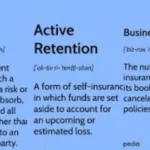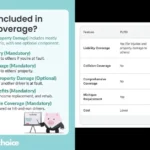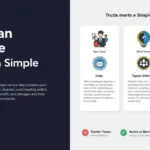In today’s rapidly evolving educational landscape, education MR—short for Education Mixed Reality—is redefining how students interact with knowledge, teachers deliver lessons, and institutions prepare learners for a tech-centric future. By blending augmented reality (AR) and virtual reality (VR), it enhances engagement, boosts retention, and supports immersive, hands-on learning across multiple disciplines.
The Rise of Immersive Learning in the Digital Era
As technology continues to permeate every sector, the education industry is embracing innovative tools that drive better results. Immersive learning platforms are not just futuristic—they are transforming classrooms globally. Whether in primary education, higher academia, or corporate training, these tools provide enriched learning experiences that go far beyond static textbooks and lectures.
What Is Education MR?
This technology merges elements of AR and VR to create an immersive environment where learners can interact with digital objects and simulations. In AR, virtual objects are overlaid onto the real world, while VR offers a fully immersive, computer-generated environment. When these converge, students gain enhanced context and tactile interactivity.
How It Works
Mixed reality integrates hardware like headsets, sensors, and gesture-control devices with educational software to deliver interactive content. Learners can explore the human body in 3D, conduct virtual chemistry experiments without real-world hazards, or visit historical landmarks from a classroom.
Core Technologies
- Head-Mounted Displays (HMDs): Devices like HoloLens or Oculus enable hands-free exploration.
- Gesture Recognition: Allows interaction with virtual objects through movement.
- Spatial Mapping: Accurately overlays digital content onto the physical world.
- AI Integration: Adjusts lessons based on learner performance in real-time.
Benefits of Using Education MR
Increased Engagement
Students are more likely to participate when immersed in interactive environments. Unlike traditional methods, this approach promotes exploration, critical thinking, and problem-solving.
Improved Retention
Information becomes easier to remember through multisensory learning. The physical interaction with virtual objects enhances understanding and recall.
Safe Practice Zones
Students can perform complex or risky tasks—like surgeries or engineering tests—in simulated environments without danger.
Support for Diverse Learners
These platforms are inclusive. They can be adapted to meet the needs of students with visual, auditory, or learning disabilities.
Real-Time Personalization
Progress tracking and adaptive feedback tailor the educational experience to each student’s strengths and weaknesses.
Education MR in Different Learning Environments
Primary and Secondary Classrooms
Young learners can experience abstract concepts in tangible ways. From rotating geometric shapes to exploring ecosystems virtually, lessons become more impactful.
Colleges and Universities
Fields like medicine, architecture, and engineering benefit immensely from MR tools. Simulations replace expensive and potentially hazardous real-world setups.
Vocational and Corporate Training
In professional settings, MR helps employees develop soft skills, practice machinery operation, and rehearse emergency responses in lifelike conditions.
Special Education
For neurodivergent learners, structured and repeatable MR content builds cognitive bridges. It also reduces anxiety in learning new skills.
Comparison Table: Education MR vs Traditional and Digital Methods
| Feature | Traditional Learning | Digital Learning | Education MR |
| Cost | Low upfront | Moderate | Higher initial, high ROI |
| Efficiency | Low | Moderate | High |
| Ease of Use | Easy | Easy | Moderate |
| Scalability | Low | High | Medium to High |
| Benefits | Text-based only | Interactive (2D) | Immersive, interactive |
Implementation Challenges
Financial Investment
The biggest hurdle is cost. Headsets, development, and infrastructure are not cheap. Yet, schools investing wisely often recover through long-term savings and improved outcomes.
Technical Know-How
Educators must be trained to operate MR systems. Furthermore, reliable internet and IT support are essential.
Custom Content
High-quality experiences require collaboration between teachers and tech developers. Generic software doesn’t meet complex curriculum standards.
Accessibility
Equal access is essential. Schools need to ensure all students—regardless of economic background—can benefit.
The Future Outlook for Education MR
The future looks bright as AI, mobile hardware, and cloud computing reduce barriers. Key trends include:
AI-Powered Learning
Artificial intelligence will make MR experiences even more personalized by adjusting content dynamically in response to student behavior.
Cloud-Based Resources
Access to content libraries via the cloud will reduce development costs and enable sharing across institutions.
MR on Mobile Devices
As smartphones and tablets grow more powerful, more students will access immersive lessons without specialized headsets.
Gamification
Lessons that use challenges, rewards, and leaderboards enhance motivation and keep learners engaged for longer.
Worldwide Impacts and Equity
Education MR has the potential to close global learning gaps. By making quality education accessible in remote or underfunded areas, it fosters opportunity and equity. Strategic implementation through public-private partnerships can accelerate this transformation.
Thought Leadership in the Field
Education experts affirm that immersive tools will not replace teachers—but will empower them. When used strategically, these systems elevate instruction by making complex topics accessible, relatable, and engaging. “It’s not about replacing human instruction—it’s about enhancing it,” says one instructional design expert.
Practical Use Cases
- Medical Training: Virtual surgeries and diagnostics without patient risk.
- Engineering Practice: Virtual labs replace costly physical ones.
- Language Acquisition: Students interact with AI-driven avatars to practice real-world conversation.
- History Reenactments: Virtual walkthroughs of past civilizations deepen context.
Ethical Considerations
Data security must be a priority. Any system collecting student behavior should use strong encryption and allow opt-in consent. Moreover, all content must be inclusive and free of bias.
Getting Started
To adopt education MR effectively:
- Start small with app-based AR lessons on existing devices.
- Seek funding or partnerships to acquire equipment.
- Train educators through dedicated workshops.
- Use student feedback to refine implementations.
Conclusion
Education MR is revolutionizing the way we approach teaching and learning. By merging interactive technology with sound pedagogy, it delivers dynamic, inclusive, and personalized learning experiences. Institutions that embrace this shift today are preparing learners for the challenges of tomorrow in the most impactful way.
FAQs
What is education MR in simple terms?
It stands for “Education Mixed Reality,” which blends virtual and real-world environments to offer immersive learning experiences.
Is it suitable for all subjects?
Yes, from math and science to history and languages, MR tools can be customized for nearly every subject.
Do schools need special devices?
Ideally, yes. MR headsets or compatible mobile devices are required for full functionality, though lightweight versions exist for phones and tablets.
How much does it cost?
Costs vary depending on scope, but many schools start with affordable AR apps before scaling up to full MR platforms.
Can it replace traditional learning?
It’s not meant to replace, but to enhance traditional and digital learning by adding interactivity and engagement.
Are students’ data safe?
Most platforms use data security measures like encryption, and responsible schools implement strict privacy policies to ensure safety.











